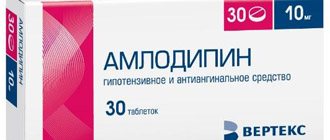Home | About us | Delivery | Advertisers | Login | Registration
Delivery on Sundays and holidays does not work!
- Medicines
- dietary supplementsVitamins
- Categories from A to Z
- Brands from A to Z
- Products from A to Z
- Medical equipment
- beauty
- Child
- Care
- Honey products appointments
- Herbs and herbal teas
- Medical nutrition
- Journey
- Making medicinesStock
Pharmacy online is the best pharmacy in Almaty, delivering medicines to Almaty. An online pharmacy or online pharmacy provides the following types of services: delivery of medicines, medicines to your home. Online pharmacy Almaty or online pharmacy Almaty delivers medicines to your home, as well as home delivery of medicines in Almaty.
my basket
Apteka84.kz is an online pharmacy that offers its customers medicines, medicinal and decorative cosmetics, dietary supplements, vitamins, baby food, intimate products for adults, medical equipment and thousands of other medical and cosmetic products at low prices. All data presented on the Apteka84.kz website is for informational purposes only and is not a substitute for professional medical care. Apteka84.kz strongly recommends that you carefully read the instructions for use contained in each package of medicines and other products. If you currently have any symptoms of the disease, you should seek help from a doctor. You should always tell your doctor or pharmacist about all the medicines you take. If you feel you need further help, please consult your local pharmacist or contact our GP online or by telephone.
© 2022 Pharmacy 84.
Arlevert No. 20 tab.
Trade name Arlevert® International nonproprietary name No Dosage form Tablets Composition One tablet contains active substances: cinnarizine 20 mg, dimenhydrinate 40 mg, excipients: microcrystalline cellulose, corn starch, talc, hypromellose, colloidal anhydrous silicon dioxide, magnesium stearate**, croscarmellose sodium salt, purified water***. ** - substance of plant origin *** - removed during production Description Tablets are round in shape, with a biconvex surface, white to pale yellow, with the inscription “A” on one side. Pharmacotherapeutic group Other drugs for the treatment of diseases of the nervous system. Remedies for dizziness. Cinnarizine in combination with other drugs. ATX code N07CA52. Pharmacological properties Pharmacokinetics Absorption and distribution: After oral administration, diphenhydramine is rapidly released from dimenhydrinate. Diphenhydramine and cinnarizine are rapidly absorbed from the gastrointestinal tract. In humans, maximum concentrations of cinnarizine and diphenhydramine in plasma (Cmax) are achieved within 2-4 hours. The half-lives of both substances from plasma range from 4 to 5 hours (regardless of whether they are used separately or as part of a combination drug). Metabolism: Cinnarizine and diphenhydramine are extensively metabolized in the liver. Cinnarizine is metabolized through cycle hydroxylation reactions, which are partially catalyzed by the cytochrome IID6 isoenzyme, and N-dealkylation reactions, for which cytochrome isoenzymes exhibit low selectivity. The main metabolic pathway of diphenhydramine is sequential N-demethylation of the tertiary amine. In vitro studies on microsomal fractions from human liver show that these reactions occur with the participation of various cytochrome isoenzymes, including the IID6 isoenzyme. Excretion: Cinnarizine is excreted mainly in feces (40-60%) and to a lesser extent in urine (mainly in the form of metabolites conjugated with glucuronic acid). Diphenhydramine is excreted mainly in the urine and mainly in the form of metabolites; the main metabolite (40-60%) is a deaminated derivative - diphenylmethoxyacetic acid. Pharmacodynamics Dimenhydrinate, the chlortheophylline salt of diphenhydramine, acts as an antihistamine with anticholinergic (M-anticholinergic) activity, which has a parasympatholytic effect and depresses the central nervous system. By acting on the chemoreceptor trigger zone in the 4th ventricle, this drug suppresses vomiting and dizziness. Thus, dimenhydrinate acts primarily on the central vestibular system. Cinnarizine, due to its ability to block calcium channels, inhibits the entry of calcium into the vestibular sensory cells, thereby acting as a vestibulolytic agent. Thus, cinnarizine acts mainly on the peripheral vestibular system. Both cinnarizine and dimenhydrinate are known medications for the treatment of dizziness. According to the results of clinical studies, the combined drug is superior in its effectiveness to each of these drugs separately. This drug has not been studied as a means of preventing motion sickness. Indications for use: symptomatic treatment of dizziness of various origins. Directions for use and dosage Adults: one tablet 3 times a day, take after meals with a small amount of liquid, without chewing. In general, the duration of use of the drug should not exceed 4 weeks. The decision about longer treatment should be made by the doctor. Children and adolescents under 18 years of age: Arlevert® is not recommended for use in children and adolescents under 18 years of age, since there are no data on the use of Arlevert® in this age group. Elderly patients: the same dose is used as for adults. For renal dysfunction: In patients with mild to moderate renal impairment, Arlevert® should be used with caution. In patients with creatinine clearance <25 ml/min (severe renal impairment), Arlevert® should not be used. In case of liver dysfunction: The efficacy and safety of Arlevert® have not been studied in patients with liver dysfunction. In case of severe liver dysfunction, Arlevert® should not be used. Side effects The most common side effects include confusion (including drowsiness, tiredness, fatigue, confusion), which occurred in approximately 8% of clinical trial participants, and dry mouth, which occurred in approximately 5% of participants. Typically, these reactions are mild and subside within a few days, even with continued treatment. Data on the frequency of side effects that occurred during the use of the drug Arlevert® in clinical trials and in subsequent spontaneous reports are given below: Often>1/100,<1/10 - drowsiness, headache - dry mouth, abdominal pain Sometimes> 1/1000, <1/100 - paresthesia, amnesia, tinnitus, tremor, nervousness, convulsions - dyspepsia, nausea, diarrhea - sweating, rash Rarely >1/10000, <1/1000 - allergic reactions (for example, skin reactions ) - visual disturbances - photosensitivity - difficulty starting urination Very rarely <1/10000 - leukopenia, thrombocytopenia, aplastic anemia In addition, the following adverse reactions are associated with the use of dimenhydrinate and cinnarizine: Dimenhydrinate: paradoxical irritability (especially in children), aggravation of already existing angle-closure glaucoma, reversible agranulocytosis. Cinnarizine: constipation, weight gain, chest tightness, cholestatic jaundice, extrapyramidal disorders, skin reactions such as lupus erythematosus, lichen planus. Contraindications - severe renal dysfunction (creatinine clearance £ 25 ml/min) - severe liver dysfunction - hypersensitivity to active substances, diphenhydramine or other antihistamines of a similar structure, or to any of the auxiliary components of the drug - patients with closed-angle glaucoma, convulsions, suspected increased intracranial pressure, as well as patients suffering from alcoholism and urinary retention caused by disorders of the urethra and prostate. Drug interactions The anticholinergic and sedative effectiveness of Arleverta® may be enhanced by the use of monoamine oxidase inhibitors. The effect of Arleverta® can be enhanced by procarbazine. Like other antihistamines, Arlevert® can enhance the sedative effect of drugs that depress the central nervous system, in particular alcohol, barbiturates, narcotic analgesics and tranquilizers. Patients should be warned not to drink alcoholic beverages during treatment with Arlevert®. Arlevert® may also increase the effects of antihypertensive drugs, ephedrine and anticholinergic drugs, in particular atropine and tricyclic antidepressants. Arlevert® can mask the manifestations of the ototoxic effect of aminoglycoside antibiotics and the skin reaction to skin allergy tests. The simultaneous use of Arlevert® with drugs that prolong the QT interval on the ECG (for example, antiarrhythmic drugs of classes Ia and III) should be avoided. There is not enough information on the possible pharmacokinetic interaction of cinnarizine and diphenhydramine with other drugs. Diphenhydramine inhibits metabolic processes mediated by the cytochrome IID6 isoenzyme, therefore caution is recommended when using Arlevert® in combination with substrates of this enzyme (especially those with a narrow therapeutic index). Special instructions Arlevert® does not cause a significant decrease in blood pressure, however, it should be used with caution in patients with low blood pressure. To minimize irritation of the gastric mucosa, Arlevert® should be taken after meals. Arlevert® should be used with caution in patients with diseases or conditions that may be aggravated by the use of anticholinergic drugs, for example, in patients with increased intraocular pressure, pyloric and duodenal obstruction, prostatic hypertrophy, arterial hypertension, thyrotoxicosis or severe coronary heart disease degrees. Arlevert® should be used with caution in patients with Parkinson's disease. Use during pregnancy and lactation Pregnancy: The safety of Arlevert® in pregnant women has not been established. To assess the effect of a drug on pregnancy, embryonic and fetal development, as well as postnatal development, animal testing alone is not enough. The risk of teratogenicity of each of the components separately (dimenhydrinate/diphenhydramine and cinnarizine) is low. No teratotogenic effects were detected in animal tests. Dimenhydrinate may have a stimulating effect on the uterine musculature and shorten the duration of labor. For this reason, Arlevert® should not be used during pregnancy. Lactation: Dimenhydrinate and cinnarizine pass into mother's milk. For this reason, Arlevert® should not be used in women who are breastfeeding. Peculiarities of the drug's effect on the ability to drive a vehicle and operate potentially dangerous mechanisms Arlevert® may cause drowsiness, especially at the initial stage of treatment. In such cases, patients should not drive vehicles or operate machinery. Overdose Symptoms: drowsiness, dizziness and ataxia in combination with such manifestations of anticholinergic action as dry mouth, facial flushing, dilated pupils, tachycardia, fever, headache and urinary retention. Complications such as convulsions, hallucinations, agitation, respiratory depression, hypertension, tremors and coma (especially in cases of severe overdose) may also occur. Treatment: in case of respiratory depression or acute circulatory failure, the patient should be prescribed supportive therapy. It is recommended to rinse the stomach with isotonic sodium chloride solution. Body temperature should be closely monitored, as antihistamine intoxication can cause fever (especially in children). For cramping pain, short-acting barbiturates can be prescribed, but they should be used with caution. In the case of a pronounced anticholinergic effect on the central nervous system, a test with physostigmine should be carried out, and then physostigmine should be prescribed by slow intravenous infusion (or, if necessary, by intramuscular injection) at a dose of 0.03 mg/kg body weight (maximum dose for adults - 2 mg; the maximum dose for children is 0.5 mg). Dimenhydrinate can be removed from the blood by hemodialysis, but this method of treatment in case of overdose is considered unacceptable. The required amount of the drug can be removed from the blood through hemoperfusion using activated charcoal. There are no data on the removal of cinnarizine by hemodialysis. Release form and packaging 15, 20 or 25 tablets in a blister pack made of polyvinyl chloride/polyvinylidene chloride film and aluminum foil. 20 (20 tablets in a blister pack), 30 (2 blister packs of 15 tablets each), 50 (2 blister packs of 25 tablets each) or 100 (4 blister packs of 25 tablets each) tablets along with instructions for medical use in the state and Russian languages they are placed in a cardboard pack. Storage conditions Store at a temperature not exceeding 25 ºC. Keep out of the reach of children! Shelf life: 3 years Do not use after expiration date! Conditions for dispensing from pharmacies By prescription Manufacturer Hennig Arzneimittel GmbH & Co. KG 65438 Flörsheim am Main, Germany

